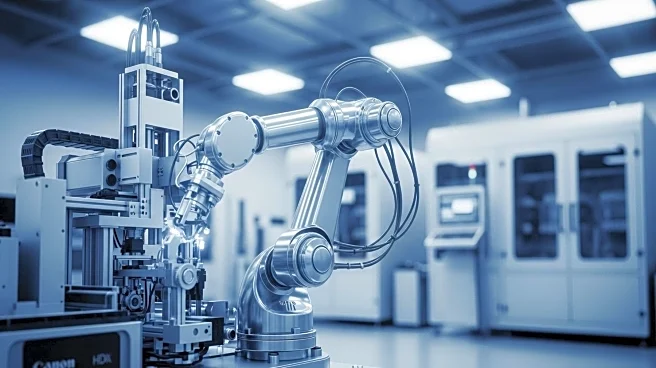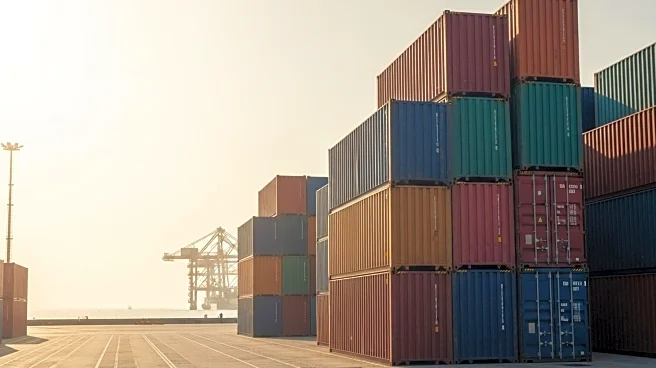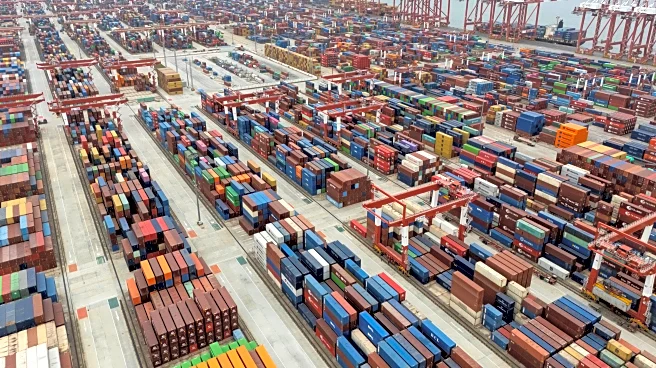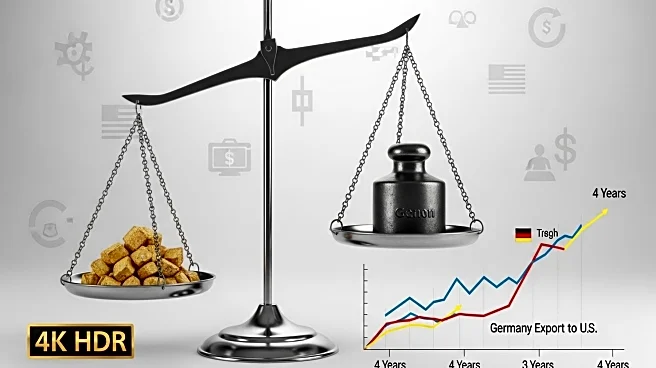What's Happening?
China has significantly increased its share in the global industrial robot market, with domestic vendors now holding over 50% of the market, up from under 30% a decade ago. This growth is supported by state policies and a focus on STEM education, which has resulted in China graduating more science majors than the EU and the U.S. combined. The country is also advancing in fields like electric vehicles, batteries, and drones, with Chinese firms leading in humanoid robot production. Despite challenges in high-performance domestic chips, China is rapidly progressing towards self-reliance, with substantial investments in robotics and AI.
Why It's Important?
China's advancements in robotics and AI pose a competitive challenge to the U.S., which risks losing its edge in these fields. The U.S. still leads in software and core AI, but lacks a scaled, homegrown industrial robot OEM. This shift could impact U.S. industries reliant on automation and AI, as China continues to attract talent and investment. The U.S. must address skills shortages and supply chain vulnerabilities to maintain competitiveness. The Association for Advancing Automation warns that without leadership in physical AI, the U.S. could fall behind in the global robotics and AI race.
What's Next?
The U.S. may need to implement strategies such as establishing a central robotics office, offering tax incentives for automation, and expanding STEM workforce training to counter China's momentum. Policymakers are encouraged to rebuild the industrial base and attract global talent to maintain competitiveness. The U.S. should also focus on localizing production and closing capability gaps in critical hardware supply chains. These steps could help the U.S. regain its leadership position in robotics and AI.
Beyond the Headlines
China's state-led model allows for prolonged inefficiency to secure strategic breakthroughs, which could lead to overbuild and consolidation. However, China's resolve in achieving strategic outcomes should not be underestimated. The U.S. must balance market discipline with strategic policy design to compete effectively. The global division of labor has raised living standards but also hollowed out domestic manufacturing, presenting challenges for U.S. industries.













